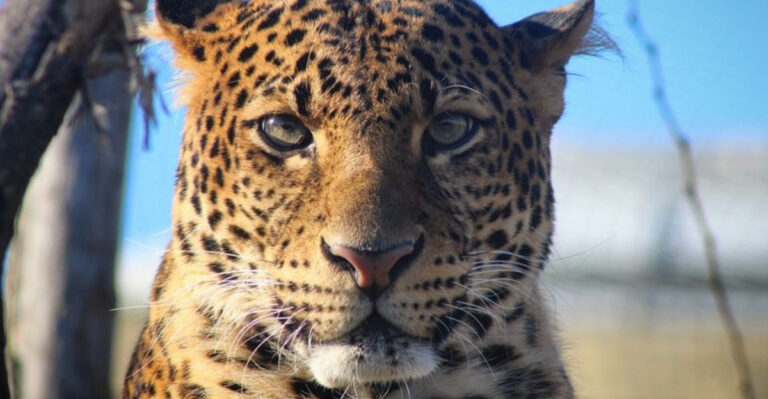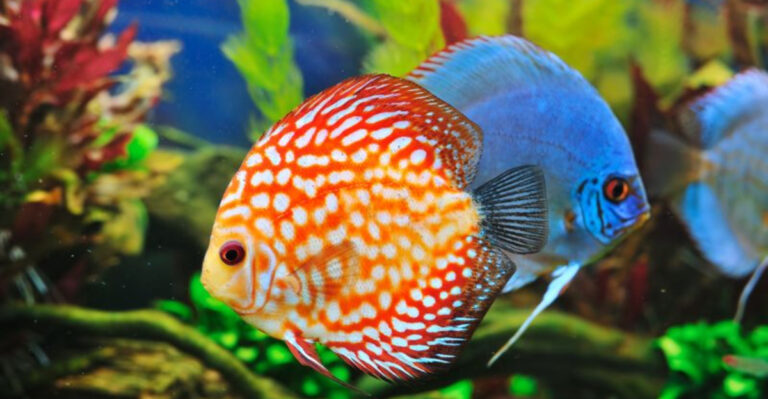10 Mammals That Have Mastered Ocean Life (And 5 That Thrived In Both Land And Water)
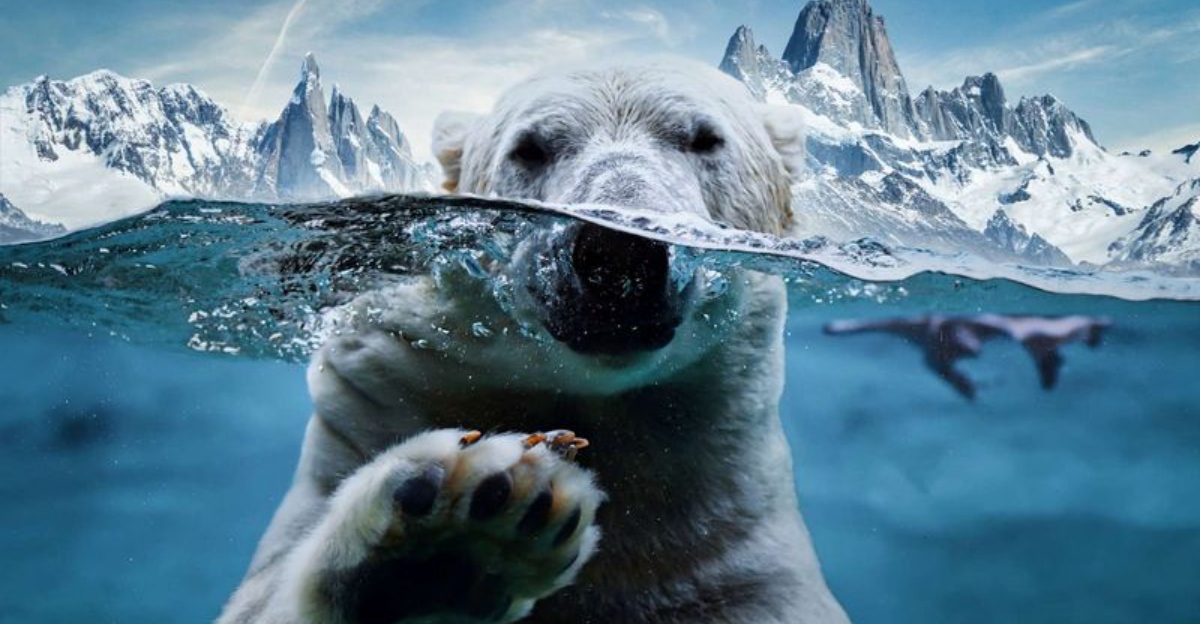
When we think of ocean creatures, fish and sharks might come to mind first. But mammals – warm-blooded animals that nurse their young – have also conquered the deep blue sea in amazing ways.
Some have completely adapted to life underwater, while others have developed special abilities to thrive in both wet and dry environments. These remarkable animals show just how adaptable mammals can be when facing new challenges.
1. Blue Whales: Ocean Giants With Hearts The Size Of Cars
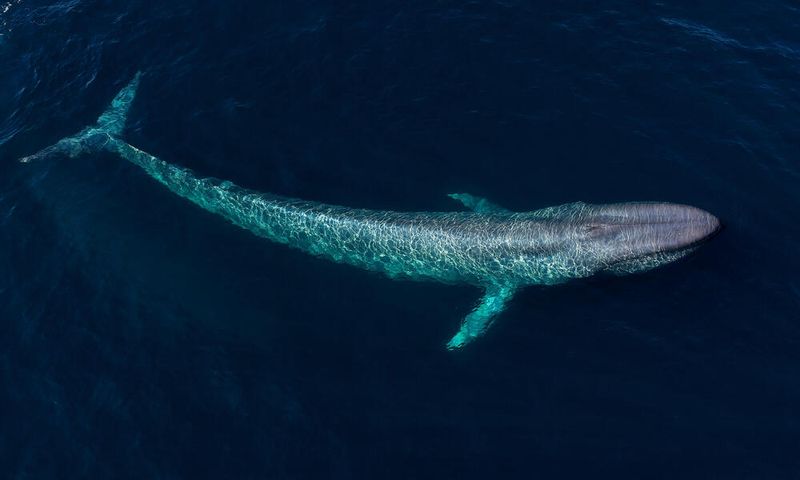
Blue whales rule the oceans as the largest animals ever to exist on Earth! Growing up to 100 feet long and weighing as much as 200 tons, these gentle giants could fit 30 elephants inside their massive bodies.
Despite their enormous size, blue whales feed on tiny krill by gulping massive amounts of water and filtering out these small crustaceans. Their hearts alone are the size of a small car and can be heard beating from two miles away.
These magnificent mammals evolved from land animals millions of years ago, completely transforming to master ocean life with sleek bodies, blowholes, and powerful flukes for swimming through the deep blue.
2. Orcas: The Intelligent Ocean Predators With Family Values
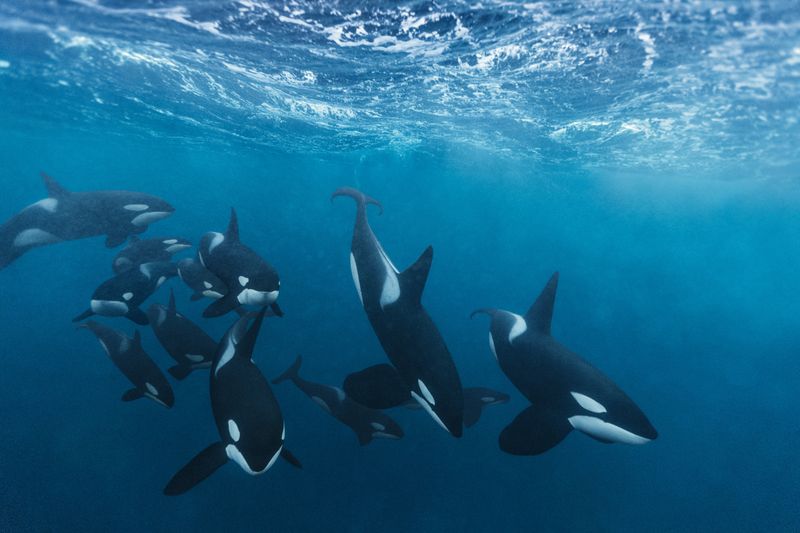
Orcas, often called killer whales, aren’t actually whales at all – they’re the largest members of the dolphin family! These striking black-and-white hunters live in tight-knit family groups called pods, passing down hunting techniques and cultural traditions through generations.
Each pod develops its own unique hunting strategies and even has distinct dialects of calls and clicks. Some orcas specialize in hunting fish, while others prey on seals, sea lions, and even other whales.
Female orcas can live up to 80 years in the wild, creating strong mother-offspring bonds that last a lifetime. Their remarkable intelligence and social structure make them one of the ocean’s most successful predators.
3. Narwhals: Unicorns Of The Sea With Built-In Ice Picks
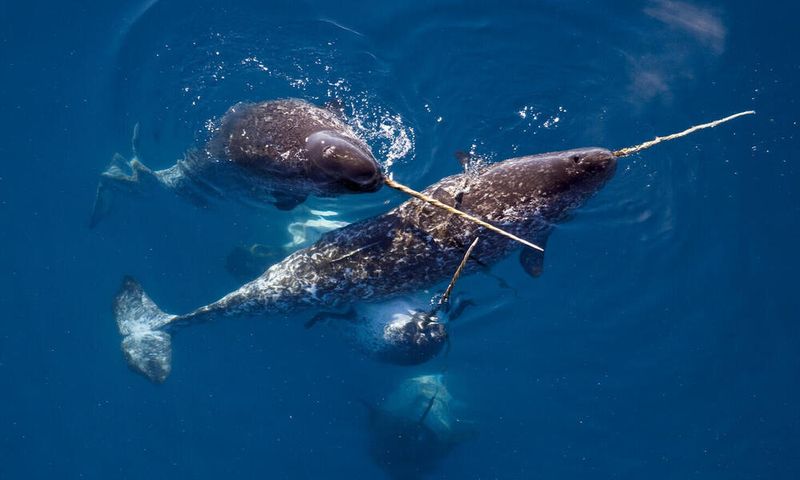
Narwhals sport one of nature’s strangest features – a spiral tusk that’s actually an overgrown tooth! These mysterious Arctic dwellers navigate freezing waters year-round, using their extraordinary tusks (which can grow up to 10 feet long) for hunting, breaking ice, and possibly even sensing water conditions.
Males typically develop these impressive tusks, though some females grow them too. Scientists have discovered that the tusks contain millions of nerve endings, making them incredibly sensitive tools.
Perfectly adapted to Arctic conditions, narwhals can dive nearly a mile deep and hold their breath for up to 25 minutes. Their blubber-rich bodies help them survive in waters that would freeze most other mammals solid.
4. Bottlenose Dolphins: The Ocean’s Problem-Solvers With Permanent Smiles
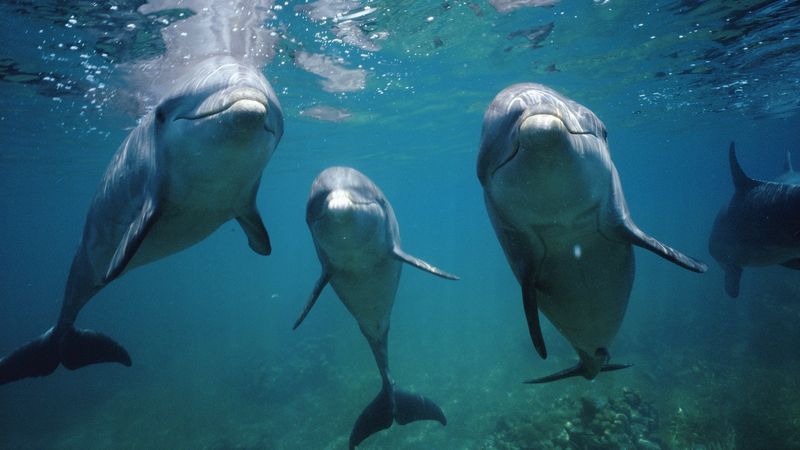
Bottlenose dolphins rank among the brainiest creatures in the sea, with problem-solving skills that rival primates! These social mammals use tools – wrapping sponges around their snouts to protect themselves while foraging on the sharp ocean floor.
Each dolphin develops its own signature whistle as a personal name, which friends and family members use to call them specifically. Their complex communication includes clicks, whistles, and body language that creates a sophisticated social network.
Sleeping presents a unique challenge for these air-breathing mammals. Their solution? They rest half their brain at a time, keeping one eye open to watch for predators and remember to surface for air. Talk about smart snoozing!
5. Sperm Whales: Deep-Diving Champions With Built-In Sonar
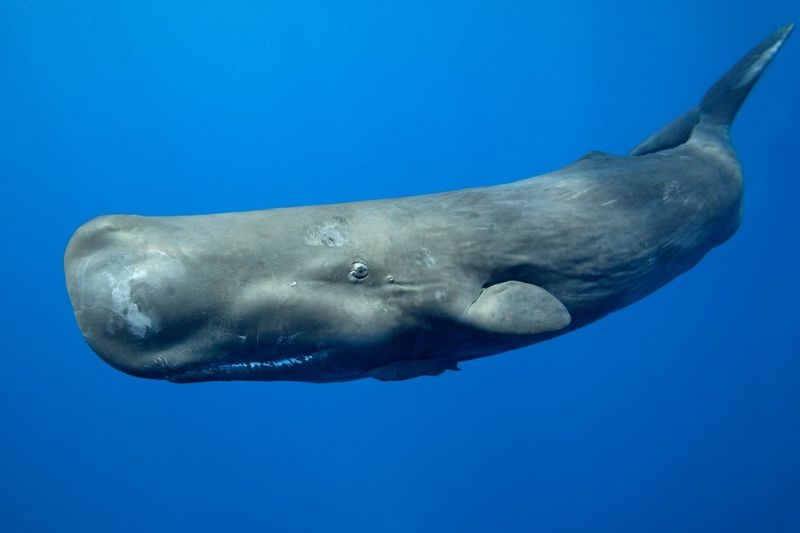
Sperm whales plunge deeper than any other mammal on Earth, hunting giant squid in pitch-black waters nearly two miles below the surface! Their massive, box-shaped heads contain a special organ filled with waxy oil called spermaceti, which helps them control buoyancy during these extreme dives.
These oceanic giants produce the loudest sounds of any animal – powerful clicks that can stun prey and may even be used to communicate across entire ocean basins. Their distinctive clicks form part of unique dialects shared by family groups.
Despite their fearsome hunting capabilities, sperm whales form tight social bonds, with females and calves living in protective family units while males eventually strike out on their own to roam the deep ocean.
6. Manatees: Gentle Sea Cows That Inspired Mermaid Legends
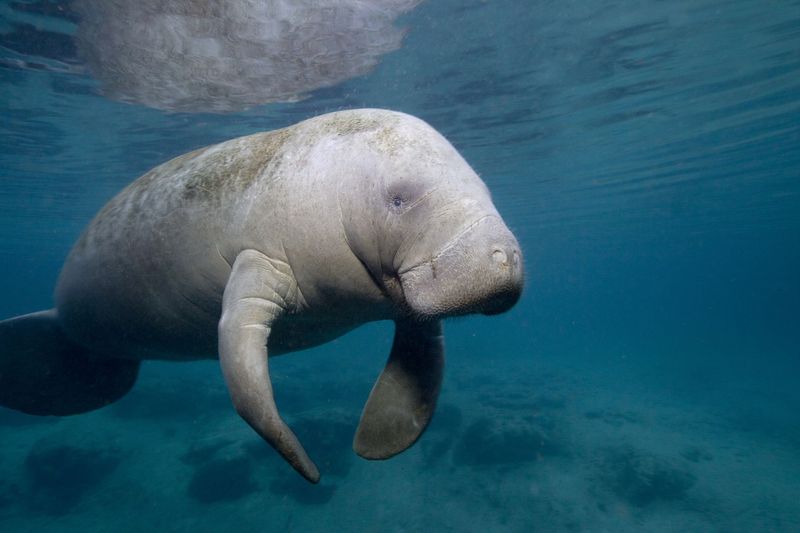
Manatees float through warm coastal waters with the grace of underwater blimps, munching on seagrass for up to seven hours daily! These gentle herbivores likely inspired ancient sailors’ tales of mermaids, though it’s hard to imagine how anyone confused these rotund creatures with mythical beauties.
Despite their bulky appearance, manatees move with surprising agility using their powerful tails and flippers. They can even stand on their tail to reach tasty vegetation growing near the water’s surface.
Their whiskers, called vibrissae, contain thousands of sensitive nerve endings that help them navigate murky waters and identify edible plants. Though they look blubbery, manatees actually have very little body fat – their round shape comes from an enormous digestive tract needed to process all that plant material.
7. Elephant Seals: Blubbery Beach Masters With Built-In Diving Gear

Male elephant seals transform into massive beach bullies during mating season, growing enormous inflatable noses and battling rivals in spectacular showdowns! These colossal mammals can weigh up to 8,800 pounds – as much as a pickup truck – with males dwarfing females in one of the most extreme size differences among mammals.
Beyond their beach drama, elephant seals are incredible deep-sea divers. Their special blood chemistry allows them to hold their breath for up to two hours while hunting at depths of nearly a mile.
When diving, they collapse their nostrils completely shut and their lungs compress under extreme pressure. Their bodies slow heart rates dramatically and redirect blood flow to vital organs – essentially turning into living submarines with specialized diving equipment built right in!
8. Beluga Whales: Smiling Arctic Socialites With Bendy Necks
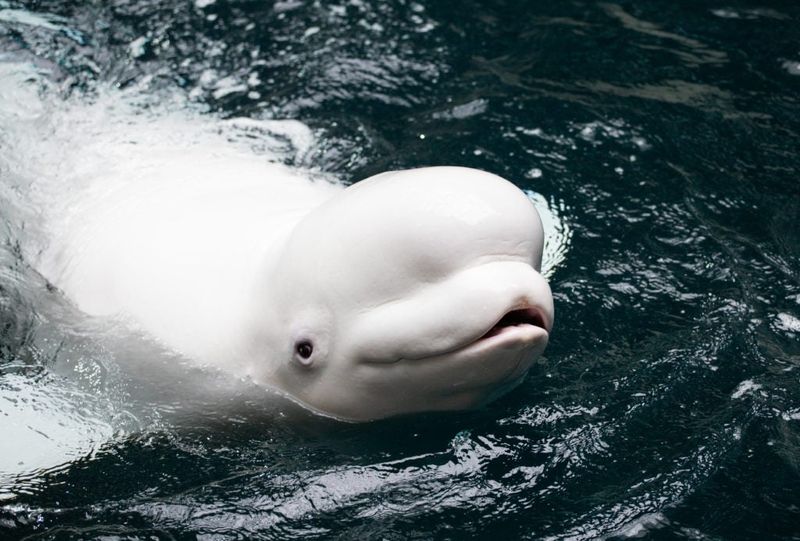
Belugas stand out in the whale world with their snow-white color and distinctively bulbous foreheads! Nicknamed “sea canaries,” these chatty Arctic dwellers produce an amazing variety of sounds – whistles, clicks, moos, and chirps that sound like a radio constantly changing stations.
Unlike other whales with fused neck vertebrae, belugas have unusually flexible necks that allow them to turn their heads in all directions. This unique adaptation helps them maneuver through ice-filled waters and locate prey hiding beneath Arctic ice sheets.
Their rounded foreheads, called melons, contain specialized tissue that focuses and directs their vocalizations like a biological loudspeaker. Belugas can even change the shape of their melons by moving air around inside, creating different sounds for different situations.
9. Dugongs: Ancient Sea Grazers With Cow-Like Tails

Dugongs munch their way through seagrass meadows like underwater cows, leaving behind telltale feeding trails in the ocean floor! Closely related to manatees but with distinctive dolphin-like tails, these peaceful plant-eaters have roamed warm coastal waters for over 50 million years.
Baby dugongs ride on their mothers’ backs to stay safe from sharks and other predators. They form strong bonds, with calves nursing for up to 18 months before becoming independent grazers.
Unlike their manatee cousins who live in both fresh and salt water, dugongs stick exclusively to marine environments. Their muscular upper lips work like specialized garden tools – splitting into two parts that move independently to uproot and manipulate seagrass into their mouths with remarkable precision.
10. Vaquitas: The Critically Endangered Porpoises With Panda-Like Eyes
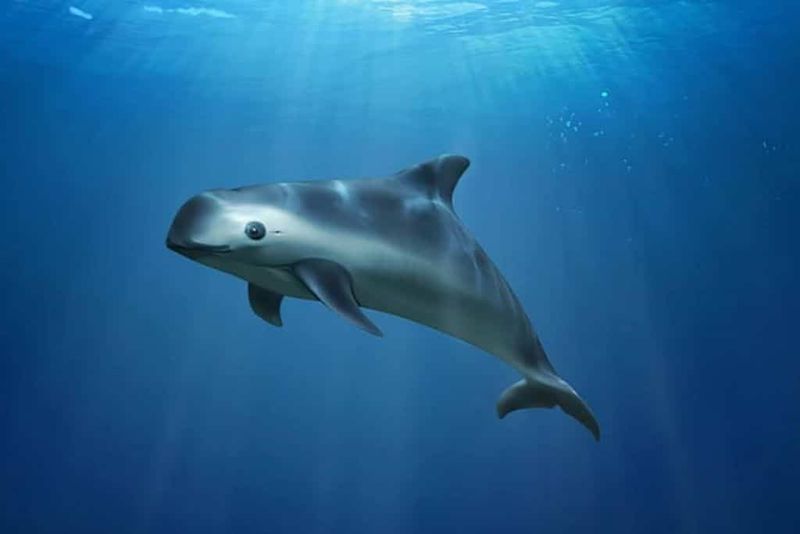
Vaquitas hold the unfortunate title of world’s most endangered marine mammal, with fewer than 10 individuals remaining in Mexico’s Gulf of California! These tiny porpoises – reaching only about 5 feet long – are instantly recognizable by their dark rings around the eyes and mouth, giving them a panda-like appearance.
Unlike dolphins that actively hunt fish, vaquitas are shy filter feeders that strain small fish, squid, and crustaceans from the water. They rarely leap from the water or approach boats, making them particularly difficult to study.
Their name means “little cow” in Spanish, though they’re more closely related to dolphins and whales. Despite conservation efforts, illegal fishing continues to threaten their existence through accidental entanglement in gill nets.
11. Platypuses: Duck-Billed Oddities That Lay Eggs And Detect Electricity
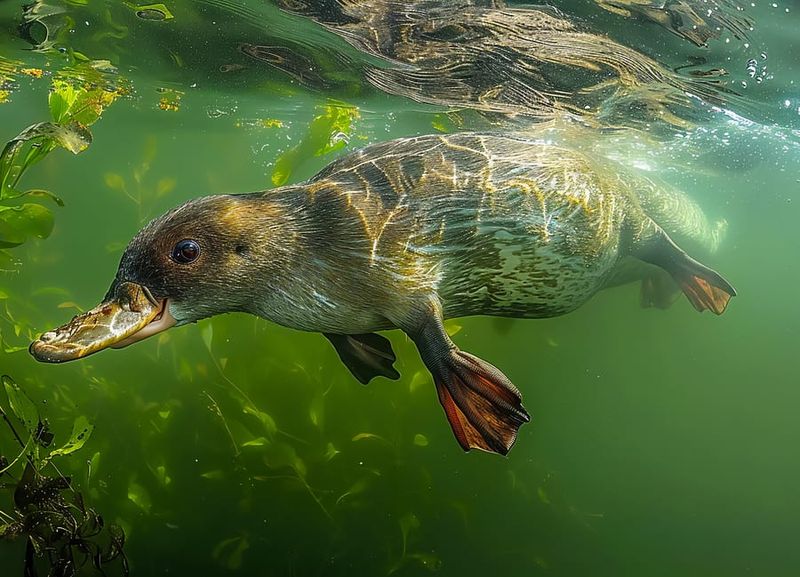
Platypuses seem like nature’s practical joke – mammals with duck bills, beaver tails, and webbed feet that lay eggs instead of giving birth to live young! These bizarre Australian creatures straddle the boundary between land and water with remarkable adaptations for both environments.
When hunting underwater, platypuses close their eyes, ears, and nostrils completely. Instead, they rely on electroreceptors in their bills to detect the tiny electrical signals produced by their prey’s muscle movements – essentially “seeing” with electricity.
Male platypuses pack venomous spurs on their hind legs that can cause excruciating pain in humans. Scientists believe these weapons evolved primarily for fighting other males during breeding season rather than for defense against predators.
12. Beavers: Nature’s Engineers With Built-In Toolkits
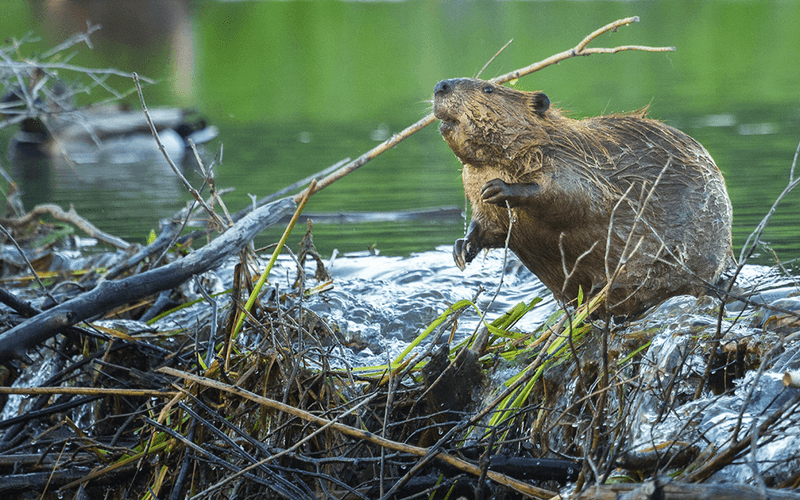
Beavers transform entire ecosystems by building elaborate dams that create wetlands teeming with life! These buck-toothed builders can fell trees several times their size using powerful jaws and chisel-like teeth that never stop growing throughout their lives.
Underwater, special transparent eyelids act like built-in goggles, while their nostrils and ears close automatically when they dive. Their flat, paddle-like tails serve multiple purposes – acting as rudders while swimming, fat storage for winter, and alarm systems when slapped against water to warn family members of danger.
Beaver lodges feature underwater entrances leading to dry living chambers above the waterline, providing protection from predators and harsh weather. These remarkable rodents can hold their breath for up to 15 minutes during their underwater construction projects.
13. Otters: Playful Tool-Users With Stone Pouches

Sea otters float on their backs while using rocks as tools to crack open shellfish – the only marine mammals known to use tools! These charismatic creatures have the densest fur of any animal, with up to one million hairs per square inch keeping them warm in chilly waters.
To prevent drifting apart while sleeping, sea otters wrap themselves in kelp or hold paws in groups called rafts. Some individuals develop favorite rocks they’ll carry in special pouches under their armpits, using these personal hammers throughout their lives.
River otters, their freshwater cousins, build elaborate tunnel systems with multiple underwater entrances and dry chambers above. Both species showcase remarkable adaptations for life between land and water, with webbed feet, water-repellent fur, and powerful tails for swimming.
14. Hippopotamuses: River Giants With Sunscreen-Secreting Skin

Hippos spend up to 16 hours daily submerged in rivers despite being terrible swimmers! These massive semi-aquatic mammals actually walk or bounce along river bottoms rather than swimming, using their webbed feet as underwater snowshoes to prevent sinking into mud.
Their skin secretes a remarkable red substance often mistaken for blood – a natural combination of sunscreen and antibiotic that protects them from sunburn and infections. Their eyes, ears, and nostrils sit high on their heads, allowing them to remain mostly submerged while still seeing, hearing, and breathing.
Despite their rotund appearance and herbivorous diet, hippos rank among Africa’s most dangerous animals. Their massive jaws can open 150 degrees wide with canine teeth reaching 20 inches long – perfect for defending territory both in water and on land.
15. Polar Bears: Arctic Swimmers With Transparent Fur And Black Skin
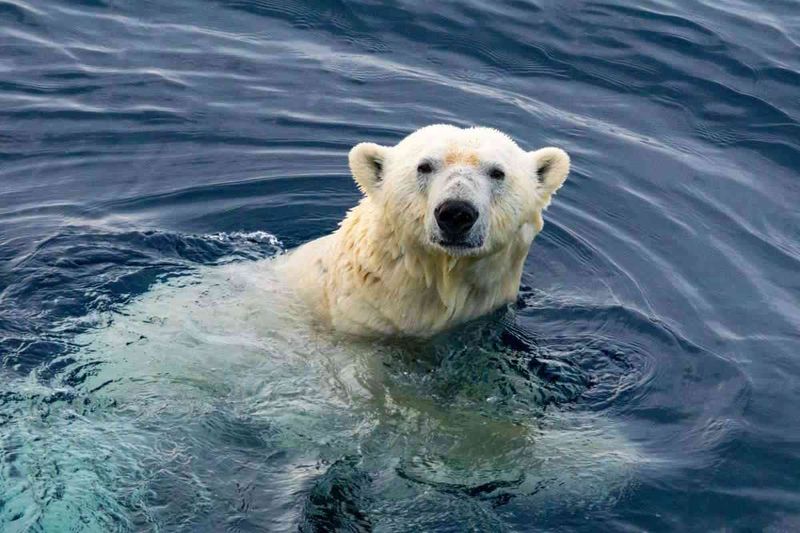
Polar bears qualify as marine mammals because they spend so much time swimming between ice floes hunting seals! Though they appear white, their fur is actually transparent and hollow – reflecting light while trapping heat against their black skin underneath.
These powerful predators can swim for days at a time, covering distances over 400 miles through frigid Arctic waters. Their massive paws, nearly 12 inches wide, act as both snowshoes on ice and powerful paddles for swimming through icy seas.
Unlike other bear species, polar bears never hibernate. Females create special maternity dens in snow banks where they give birth to cubs weighing just one pound – while mother bears can weigh up to 1,000 pounds! Their bodies are so specialized for cold that they can overheat when temperatures rise above freezing.


